After the astounding success of Snow White and the Seven Dwarfs, Disney had the capital to make whatever they wanted, or so they thought. With a budget that almost doubled Snow White, Pinocchio didn’t make nearly as much money at the box-office as its predecessor. It didn’t even earn enough to cover the budget of the production. This was not really the fault of Disney, but things were changing in 1940 as the second world war was incoming. This was only the beginning of Disney’s financial woes as the next animated feature Fantasia later that year would make for an even bigger loss.
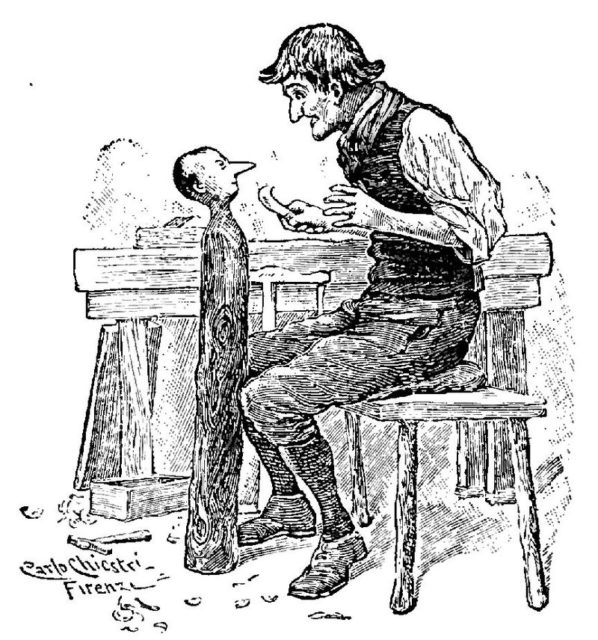
The Adventures of Pinocchio was written in 1881 by Carlo Collodi. It was originally published in parts for a children’s magazine before being sold as a book a couple of years later. Many great works of literature were published in a similar fashion like Great Expectations by Charles Dickens was first printed in chapters before being bound into a complete book. Like Snow White, the source material was much darker than the route Walt Disney went down, even with the terrifying transformation. The story was full of moral lessons that are thrust upon Pinocchio, being a naughty boy trying to fulfill good deeds so he can become a real boy. These adventures feed into Disney’s Pinocchio because you can essentially break apart the film into separate sequences.
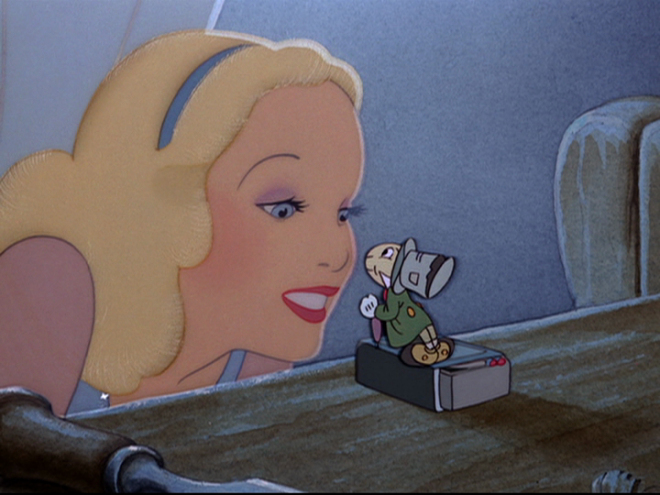
Disney’s Pinocchio begins with Jiminy Cricket playing narrator to the story of Pinocchio. Jiminy recounts how he wandered into the comfortable home owned by Geppetto. Geppetto is adding the final touches to the marionette, Pinocchio. As Geppetto lays in bed he sees a star shining bright and wishes that Pinocchio was real. Shortly after the Blue Fairy arrives and makes Pinocchio come to life, she explains that he can become a real boy if he proves to be courageous and good. The Blue Fairy appoints Jiminy Cricket as the conscience to Pinocchio. Up until this point, we have stayed in one scene for the first twenty-seven minutes. That’s a third of the movie, yet it gets us to be emotionally connected to Geppetto as his journey becomes important later on. The next scene is the following morning and already we are seeing that Pinocchio is led astray by Honest John. Honest John is a con man that convinces Pinocchio to skip school and join a traveling circus. The audience loves Pinocchio so the show owner Stromboli decides to kidnap him when he tries returning home to his father, Geppetto. The Blue Fairy comes to the aid of Pinocchio, but when he finally returns home he finds that Gepetto has gone in search of him. Again, Pinocchio has been led astray while searching for Geppetto, however this time he ends up on Pleasure Island. Pleasure Island is a place that instills fear in kids because it’s a place without rules and overindulgence, so there has to be a catch. The catch comes in one of the most terrifying scenes from a Disney film as we see the children turn into donkeys. The scene is Hitchcockian in its execution. Pinocchio escapes Pleasure Island and now heads for Monstro the whale, where he has heard Geppetto was in the belly of. In a scene that outdoes anything from Snow White, we see Pinocchio rescue Geppetto from the angered and charging Monstro. The story ends with Pinocchio having overcome so many personal obstacles that the Blue Fairy makes him a real boy and he lives happily ever after with Geppetto.
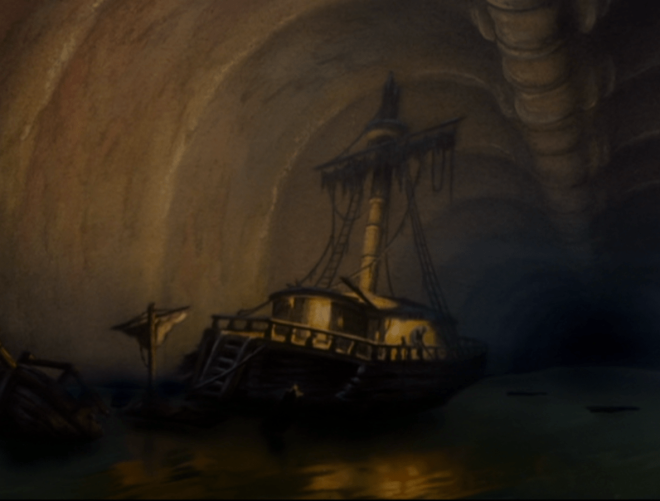
There’s a lot to love in Pinocchio from the many memorable characters to the magnificent animation. In Geppetto’s house, we get to know his cat, Figaro. Personally, I think Figaro is my favorite character in the film, he’s cute and clumsy. Even Honest John is a great villain, particularly so as a fox because I just don’t think they were particularly great at drawing humans. Geppetto is the exception due to the voice actor being the inspiration for the character himself too. You may be surprised to find that on Pleasure Island Pinocchio takes to drinking and smoking. I like that Walt was able to really drum up the darkness of this place with such adult mannerisms. There is no way we would ever find this in a current Disney film, especially since there will never be any smoking seen in a Disney film again. The film as a whole has a Don Bluth feel to it, so I can only imagine he was greatly inspired by these early Disney films. Finally, the most lasting thing about the movie is the theme song When You Wish Upon a Star, which subsequently became the theme song for Disney’s company. The song is timeless and probably in the top ten film songs since the inception of film itself.
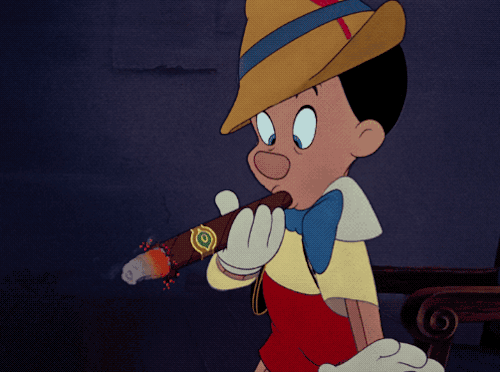
Watching Pinocchio I couldn’t help wonder about a sequel where we got to uncover more about the mystery of Pleasure Island, and I would have liked a sequel where he returned to save the other boys. And maybe that was part of the planned sequel they were toying with in the 2000s. They’ve since moved on and are developing a live-action Pinocchio. There’s no shortage of Pinocchio films as Guillermo del Toro is directing one set for 2021. There is even a Pinocchio coming out this year starring Roberto Benigni as Geppetto, which is interesting because he himself directed a live-action Pinocchio in 2002 with himself playing Pinocchio.
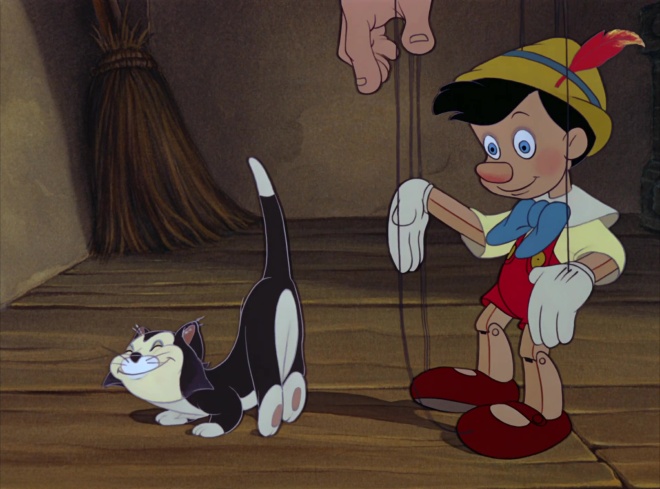
Overall, I like Snow White and the Seven Dwarfs more as it resonates in the simplicity of the story much like The Wizard of Oz. Pinocchio is still a masterpiece that grows more timeless with age.
Previously Snow White and the Seven Dwarfs
Next time Fantasia
Robert Ring

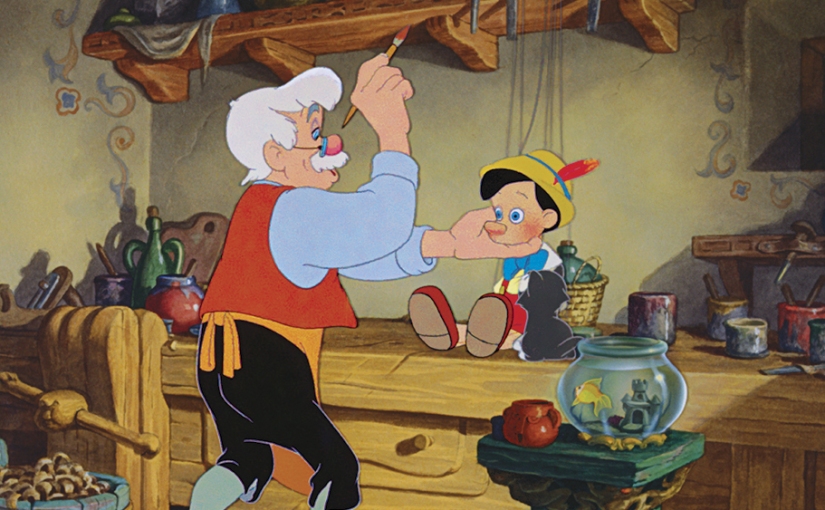
3 thoughts on “Pinocchio (1940)”